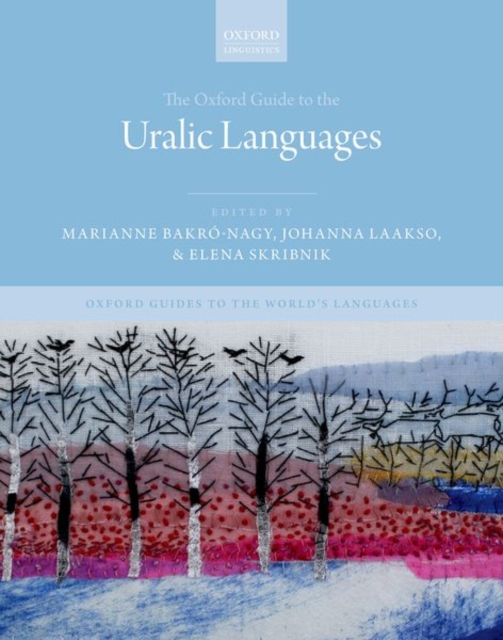
The Oxford Guide to the Uralic Languages Hardback
Edited by Marianne (Professor Emerita, Professor Emerita, Research Institute for Linguistics - Bud Bakro-Nagy, Johanna (Professor of Finno-Ugric Studies, Professor of Finno-Ugric Studies, University of V Laakso, Elena (Professor Emerita at the Institute of Finno-Ugric and Uralic Studies, Professor Eme Skribnik
Part of the Oxford Guides to the World's Languages series
Hardback
Description
This volume offers the most comprehensive and wide-ranging treatment available today of the Uralic language family, a group of languages spoken in northern Eurasia.
While there is a long history of research into these languages, much of it has been conducted within several disparate national traditions; studies of certain languages and topics are somewhat limited and in many cases outdated.
The Oxford Guide to the Uralic Languages brings together leading scholars and junior researchers to offer a comprehensive and up-to-date account of the internal relations and diversity of the Uralic language family, including the outlines of its historical development, and the contacts between Uralic and other languages of Eurasia.
The book is divided into three parts. Part I presents the origins and development of the Uralic languages: the initial chapters examine reconstructed Proto-Uralic and its divergence, while later chapters provide surveys of the history and codification of the three Uralic nation-state languages (Hungarian, Finnish, and Estonian) and the Uralic minority languages from Baltic Europe to Siberia.
This part also explores questions of endangerment, revitalization, and language policy.
The chapters in Part II offer individual structural overviews of the Uralic languages, including a number of understudied minority languages for which no detailed description in English has previously been available.
The final part of the book provides cross-Uralic comparative and typological case studies of a range of issues in phonology, morphology, syntax, and the lexicon.
The chapters explore a number of topics, such as information structure and clause combining, that have traditionally received very little attention in Uralic studies.
The volume will be an essential reference for students and researchers specializing in the Uralic languages and for typologists and comparative linguists more broadly.
Information
-
Available to Order - This title is available to order, with delivery expected within 2 weeks
- Format:Hardback
- Pages:1184 pages
- Publisher:Oxford University Press
- Publication Date:24/03/2022
- Category:
- ISBN:9780198767664
Information
-
Available to Order - This title is available to order, with delivery expected within 2 weeks
- Format:Hardback
- Pages:1184 pages
- Publisher:Oxford University Press
- Publication Date:24/03/2022
- Category:
- ISBN:9780198767664










